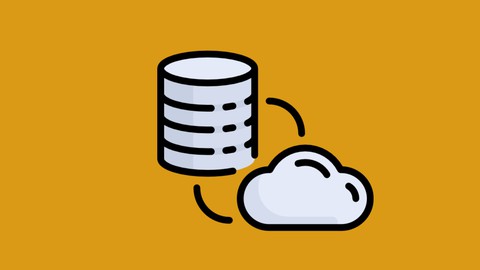
SQL Essentials For Beginners Using Command Line Interface
SQL Essentials For Beginners Using Command Line Interface, available at $19.99, has an average rating of 3.93, with 22 lectures, based on 7 reviews, and has 1680 subscribers.
You will learn about Install MySQL Database Management System Create a database from MySQL command line interface Create a table from MySQL command line client Add records into a table using MySQL Command line client Alter table structure using MySQL Command line client Update existing database records using MySQL Command line client Delete records inside a database using MySQL Command line client Query and retrieve data from database using MySQL Command line client This course is ideal for individuals who are Beginners to SQL or Beginners to MySQL It is particularly useful for Beginners to SQL or Beginners to MySQL.
Enroll now: SQL Essentials For Beginners Using Command Line Interface
Summary
Title: SQL Essentials For Beginners Using Command Line Interface
Price: $19.99
Average Rating: 3.93
Number of Lectures: 22
Number of Published Lectures: 22
Number of Curriculum Items: 22
Number of Published Curriculum Objects: 22
Original Price: $19.99
Quality Status: approved
Status: Live
What You Will Learn
- Install MySQL Database Management System
- Create a database from MySQL command line interface
- Create a table from MySQL command line client
- Add records into a table using MySQL Command line client
- Alter table structure using MySQL Command line client
- Update existing database records using MySQL Command line client
- Delete records inside a database using MySQL Command line client
- Query and retrieve data from database using MySQL Command line client
Who Should Attend
- Beginners to SQL
- Beginners to MySQL
Target Audiences
- Beginners to SQL
- Beginners to MySQL
SQL is a standard language for accessing and manipulating databases.
What is SQL?
SQL stands for Structured Query Language
SQL lets you access and manipulate databases
SQL became a standard of the American National Standards Institute (ANSI) in 1986, and of the International Organization for Standardization (ISO) in 1987
What Can SQL do?
-
SQL can execute queries against a database
-
SQL can retrieve data from a database
-
SQL can insert records in a database
-
SQL can update records in a database
-
SQL can delete records from a database
-
SQL can create new databases
-
SQL can create new tables in a database
-
SQL can create stored procedures in a database
-
SQL can create views in a database
-
SQL can set permissions on tables, procedures, and views
SQL is a Standard – BUT….
Although SQL is an ANSI/ISO standard, there are different versions of the SQL language. However, to be compliant with the ANSI standard, they all support at least the major commands (such as SELECT, UPDATE, DELETE, INSERT, WHERE) in a similar manner.
Note: Most of the SQL database programs also have their own proprietary extensions in addition to the SQL standard!
In this course we will use MySQL which is a relational database management system that comes with some sample database when installed.
We will perform the essential operations that occur frequently on any database system using the MySQL Client Tool which is a command line interface utility.
The most essential operations on any database system is called CRUD
Create | Read | Update | Delete
You will learn how to create database and table ; also how to insert some data into the table ,update records and the delete records.
Course Curriculum
Chapter 1: Setting Up Database Environment
Lecture 1: Introduction
Lecture 2: Overview of SQL from the command line
Lecture 3: What is SQL
Lecture 4: What is MySQL
Lecture 5: Download and Install MySQL
Lecture 6: What is MySQL Workbench
Lecture 7: Basic Database Concepts
Lecture 8: What is a Schema
Lecture 9: User Accessibility Options
Chapter 2: Using MySQL Command Line Tool To Perform Essential SQL Operations
Lecture 1: Basic MySQL Commands
Lecture 2: Show existing databases
Lecture 3: Show existing tables
Lecture 4: Create a new database
Lecture 5: Create a new table
Lecture 6: Add some records into table
Lecture 7: Query and retrieve records from database
Lecture 8: Display table structure
Lecture 9: Change table structure
Lecture 10: Drop a column
Lecture 11: Update existing records
Lecture 12: Delete records from database
Lecture 13: Thank You
Instructors
-

Bluelime Learning Solutions
Making Learning Simple
Rating Distribution
- 1 stars: 1 votes
- 2 stars: 1 votes
- 3 stars: 0 votes
- 4 stars: 1 votes
- 5 stars: 4 votes
Frequently Asked Questions
How long do I have access to the course materials?
You can view and review the lecture materials indefinitely, like an on-demand channel.
Can I take my courses with me wherever I go?
Definitely! If you have an internet connection, courses on Udemy are available on any device at any time. If you don’t have an internet connection, some instructors also let their students download course lectures. That’s up to the instructor though, so make sure you get on their good side!
You may also like
- Digital Marketing Foundation Course
- Google Shopping Ads Digital Marketing Course
- Multi Cloud Infrastructure for beginners
- Master Lead Generation: Grow Subscribers & Sales with Popups
- Complete Copywriting System : write to sell with ease
- Product Positioning Masterclass: Unlock Market Traction
- How to Promote Your Webinar and Get More Attendees?
- Digital Marketing Courses
- Create music with Artificial Intelligence in this new market
- Create CONVERTING UGC Content So Brands Will Pay You More
- Podcast: The top 8 ways to monetize by Podcasting
- TikTok Marketing Mastery: Learn to Grow & Go Viral
- Free Digital Marketing Basics Course in Hindi
- MailChimp Free Mailing Lists: MailChimp Email Marketing
- Automate Digital Marketing & Social Media with Generative AI
- Google Ads MasterClass – All Advanced Features
- Online Course Creator: Create & Sell Online Courses Today!
- Introduction to SEO – Basic Principles of SEO
- Affiliate Marketing For Beginners: Go From Novice To Pro
- Effective Website Planning Made Simple




















